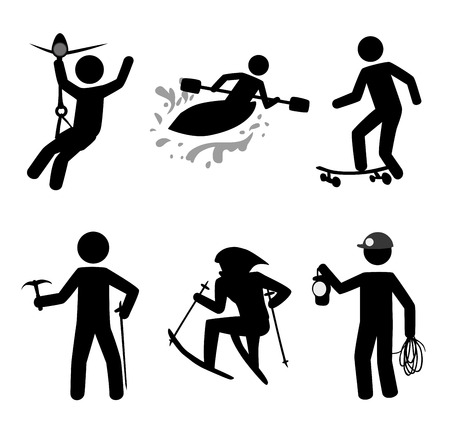1. Early Interpretations of Trauma in American History
The Beginnings: Understanding Trauma in the 19th and Early 20th Centuries
In the United States, the understanding of psychological trauma has evolved dramatically over time. During the Civil War era, many soldiers returned home suffering from symptoms like anxiety, rapid heartbeat, and insomnia. Back then, doctors called this condition “soldiers heart” or “Da Costa’s Syndrome.” People didn’t really see it as a mental health issue—many believed it was just physical exhaustion or weakness. There was a lot of misunderstanding and even stigma attached to these symptoms. Soldiers were sometimes seen as lacking courage or moral strength.
From Soldier’s Heart to Shell Shock
As time went on, especially during World War I, similar symptoms showed up among soldiers facing the intense stress of trench warfare. This time, the condition got a new name: “shell shock.” The term came from the belief that exploding shells physically damaged the brain. Over time, doctors started to realize that not all cases involved physical injury; many had emotional or psychological roots. Still, there was a lot of confusion about what caused these problems and how best to help those affected.
How Trauma Was Understood During Different Wars
| Time Period | Name for Condition | Main Beliefs About Cause | Common Attitudes |
|---|---|---|---|
| Civil War (1861-1865) | Soldier’s Heart (Da Costa’s Syndrome) | Physical fatigue or heart issues | Stigma; seen as weakness |
| World War I (1914-1918) | Shell Shock | Physical injury from explosions; later emotional shock | Mistrust; sometimes punished for “lack of discipline” |
The Stigma Around Psychological Trauma
For much of American history, people who suffered from psychological trauma were often misunderstood or judged harshly. The idea that trauma could affect someone’s mind wasn’t widely accepted. Instead, many saw it as a sign of poor character or failure to cope with stress. This stigma made it hard for veterans and others with trauma to get support or treatment.
2. The Recognition and Definition of PTSD
After the Vietnam War, a major shift happened in how the United States viewed trauma-related mental health issues. Before this era, terms like “shell shock” and “combat fatigue” were used to describe what soldiers experienced, but these conditions weren’t officially recognized as mental health disorders. It wasn’t until veterans returned from Vietnam with serious psychological symptoms that the need for a formal diagnosis became clear.
The Role of Veterans and Mental Health Professionals
Veterans played a crucial role in bringing attention to their struggles. Many formed advocacy groups, shared their stories in public forums, and demanded better support from the government. At the same time, mental health professionals started researching and documenting these symptoms more systematically. Their combined efforts led to increased awareness and understanding of traumas long-lasting effects.
Timeline: Key Moments in PTSD Recognition
| Year | Event |
|---|---|
| 1970s | Vietnam veterans and advocates push for recognition of trauma-related symptoms |
| 1980 | The American Psychiatric Association includes PTSD as an official diagnosis in the DSM-III |
| 1985+ | Continued research expands understanding of PTSD beyond military contexts to include civilians experiencing trauma |
The Impact of Formal Diagnosis
Once PTSD was included in the Diagnostic and Statistical Manual of Mental Disorders (DSM-III) in 1980, it changed everything. For the first time, people experiencing these symptoms could get a real diagnosis and access targeted treatment. Insurance companies began covering therapy for PTSD, and more resources were directed toward research and recovery programs.
How Society’s Understanding Changed
The recognition of PTSD helped reduce stigma around mental health challenges for veterans and civilians alike. It also encouraged more open conversations about trauma and mental health in American society, setting the stage for future advancements in treatment and support.

3. Evolution of Treatment Approaches
In the United States, treatment for PTSD has changed a lot over the years. At first, most approaches were rooted in psychoanalysis and talk therapy, heavily influenced by European traditions. Later on, medication became a popular way to manage symptoms, especially as new drugs for anxiety and depression were developed. However, as more research was done, experts realized that these methods did not work for everyone and often did not address the root causes of trauma.
The Early Years: Psychoanalysis and Medication
Psychoanalysis focused on exploring childhood memories and unconscious thoughts. While this helped some people understand their trauma, it did not provide practical tools for managing daily symptoms. In the 1950s and 1960s, doctors began prescribing medications like tranquilizers or antidepressants to help with anxiety, sleep problems, and mood changes related to PTSD. But these medications often came with side effects and did not fully resolve the core issues.
Transition to Evidence-Based Therapies
In the 1980s and 1990s, the U.S. healthcare system saw a major shift toward evidence-based therapies. These treatments are backed by scientific research and shown to be effective through clinical trials. Two of the most important evidence-based therapies for PTSD are Cognitive Behavioral Therapy (CBT) and Eye Movement Desensitization and Reprocessing (EMDR).
Comparison of Common PTSD Treatments in the U.S.
| Treatment Approach | Main Focus | Era/Popularity | Key Strengths | Limitations |
|---|---|---|---|---|
| Psychoanalysis | Exploring past experiences and unconscious thoughts | Early-to-mid 20th century | Insight into trauma origins | Lacks practical coping skills; time-consuming |
| Medication | Managing symptoms (anxiety, depression) | 1950s-present | Reduces immediate symptoms; accessible | Side effects; does not address root causes |
| Cognitive Behavioral Therapy (CBT) | Changing negative thought patterns and behaviors | 1980s-present | Proven effectiveness; teaches coping skills | Requires active participation; may be challenging initially |
| EMDR | Processing traumatic memories using guided eye movements | 1990s-present | Effective for many trauma survivors; relatively brief treatment | Not suitable for everyone; requires trained therapist |
The Modern Approach: Holistic and Personalized Care
Today, most U.S. mental health professionals use a combination of these evidence-based therapies tailored to each persons needs. Theres also a growing focus on holistic care—addressing physical health, social support, and lifestyle factors alongside traditional therapy. The evolution of PTSD treatment in America shows how far weve come in understanding trauma—and how much we now value treatments that are both compassionate and backed by solid science.
4. Cultural Attitudes and Barriers to Care
Understanding the American Context
In the United States, social and cultural attitudes play a huge role in how people experience PTSD and seek treatment. From strong military traditions to public perceptions of mental health, these factors can affect whether individuals feel comfortable asking for help or even recognizing their own symptoms.
Military Culture and Its Influence
America’s deep respect for its armed forces has shaped both the recognition and treatment of PTSD. However, military culture often values toughness and resilience, which can sometimes make it harder for service members to admit they are struggling or to seek help. In some cases, fear of looking weak or concerns about career consequences prevent veterans from getting needed care.
Table: Key Social Factors Affecting PTSD Treatment in the U.S.
| Factor | Description | Impact on PTSD Treatment |
|---|---|---|
| Military Culture | Emphasizes strength, discipline, and self-reliance among service members | May discourage open discussion of emotional struggles; creates barriers to seeking help |
| Stigma Around Mental Health | Negative stereotypes or misunderstandings about mental illness in society | Makes individuals less likely to talk about PTSD or use mental health services |
| Healthcare Access | Differences in insurance coverage, location of services, and availability of providers | Limits options for treatment, especially in rural areas or among underserved populations |
| Cultural Diversity | Variety of beliefs and traditions among different ethnic groups in the U.S. | Affects how PTSD symptoms are understood and whether traditional treatments are accepted or effective |
The Challenge of Stigma
Mental health stigma remains a significant barrier in the U.S. Many people worry about being judged by friends, family, or coworkers if they reveal their struggles with PTSD. This stigma can lead to isolation and untreated symptoms, making recovery more difficult.
Access to Care Issues
The American healthcare system is complex. Some people have excellent insurance coverage, while others face high costs or long waits for appointments. Access is especially tough for those living far from cities, people without insurance, and racial or ethnic minorities who may not trust the medical system due to past discrimination.
Cultural Diversity and Treatment Approaches
The United States is home to people from many backgrounds. Different communities have unique ways of understanding trauma and healing. For example, some may prefer talking therapies while others rely on family support or spiritual practices. Culturally competent care is essential to ensure everyone feels respected and understood during treatment.
5. Contemporary Innovations and Future Directions
Telehealth: Expanding Access to PTSD Care
One of the most significant changes in recent years is the rise of telehealth services for PTSD treatment. Telehealth allows people to connect with therapists and mental health professionals from the comfort of their own homes, making care more accessible—especially for veterans, rural residents, or those who have mobility challenges. Video calls, secure messaging, and online therapy platforms have made it easier than ever for Americans to get help when they need it.
Benefits and Challenges of Telehealth
| Benefits | Challenges |
|---|---|
| Increased accessibility across the U.S. | Requires reliable internet access |
| Reduces stigma by offering privacy | Difficulties building rapport online |
| Flexible scheduling for busy families | Not suitable for all patients or crises |
Trauma-Informed Care: A Whole-Person Approach
American healthcare providers are increasingly adopting trauma-informed care, which recognizes that trauma affects every person differently. This approach focuses on creating safe spaces, building trust, and empowering individuals during their healing journey. Its now common in schools, hospitals, and community centers throughout the United States, helping to reduce shame and encourage people to seek support.
Personalized Medicine: Tailoring Treatment Plans
Recent advances in personalized medicine are shaping how PTSD is treated in America. Doctors may use genetic information, lifestyle factors, and personal preferences to create customized treatment plans. This can mean choosing the right type of therapy (like EMDR or cognitive behavioral therapy), finding medications that work best for an individual’s biology, or combining traditional treatments with mindfulness or peer support programs.
Examples of Personalized Approaches
| Treatment Type | Description | Who Might Benefit? |
|---|---|---|
| Cognitive Behavioral Therapy (CBT) | Tackles negative thought patterns related to trauma | Individuals comfortable with talk therapy |
| EMDR (Eye Movement Desensitization and Reprocessing) | Uses guided eye movements to process traumatic memories | People struggling with flashbacks or nightmares |
| Medication Management | Antidepressants or anti-anxiety meds tailored to genetics and symptoms | Those needing symptom relief alongside therapy |
| Peer Support Groups | Connects people with similar experiences for mutual support | Anyone seeking community understanding and shared healing |
Ongoing Challenges in the U.S. Context
Despite these advances, many Americans still face barriers like high costs, insurance limitations, and cultural stigma around mental health. Rural areas sometimes lack specialized providers, and not everyone has access to digital tools needed for telehealth. To move forward, there is a growing call for policy change, increased funding, and public education about PTSD.

